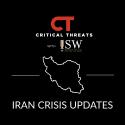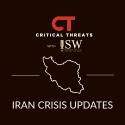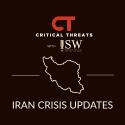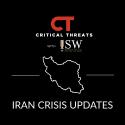Iran Crisis Update, December 11
Dec 11, 2022 - ISW Press
Some Iranian political and religious figures are debating the use of the death penalty against arrested protesters. Various reformist leaders, Qom seminary officials, and prominent Sunni cleric Moulana Abdol Hamid, among others, have separately criticized death sentences for arrested protesters in recent days. These officials were responding to the Judiciary executing a protester on December 8 for the first time since the Mahsa Amini protests began. The Judiciary has sentenced at least 10 other arrested protesters to death thus far. No senior official involved in issuing and implementing the death sentences has voiced opposition to them, however, indicating that the regime will likely continue the executions.





